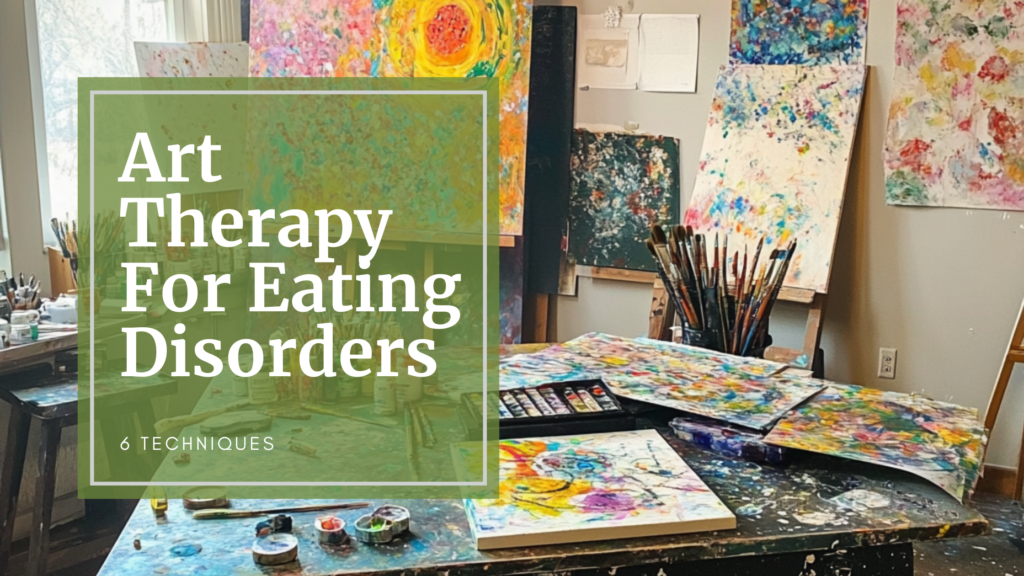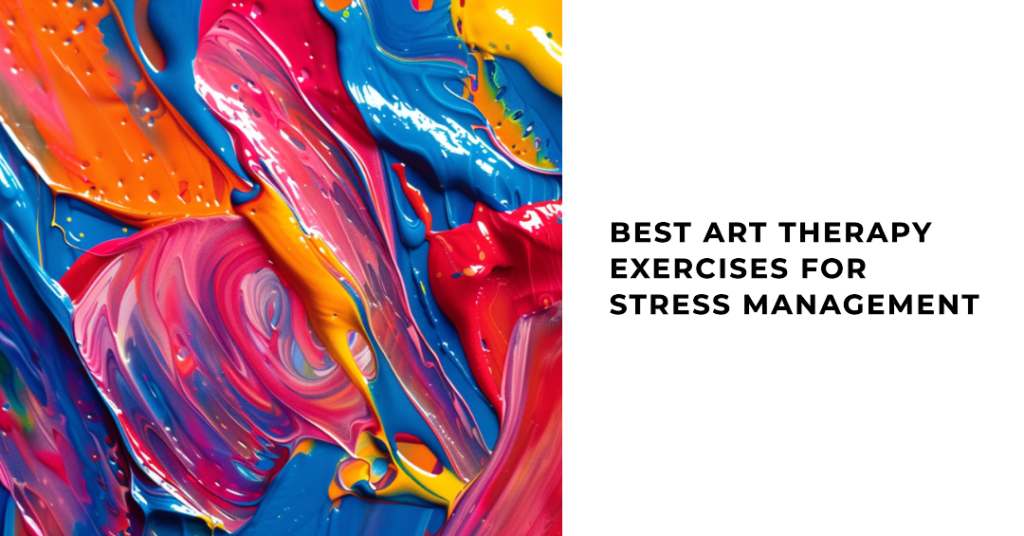5 Best Art Therapy Exercises for Emotional Healing

Introduction to Art Therapy for Emotional Healing
Art therapy has emerged as a powerful tool for emotional healing, offering individuals a creative outlet to express, process, and understand their feelings. By engaging in artistic activities, people can tap into their subconscious minds, release pent-up emotions, and gain insights into their inner worlds. This blog post will explore five of the best art therapy exercises for emotional healing, providing you with practical techniques to incorporate into your journey towards mental well-being.
Before we delve into the specific exercises, it’s important to understand the foundations of art therapy. Art Therapy Practitioner training courses offer comprehensive knowledge about the therapeutic benefits of creative expression. These courses equip practitioners with the skills to guide individuals through various art-making processes, facilitating emotional healing and personal growth.
Art therapy is not just for those with artistic skills; it’s accessible to everyone, regardless of their artistic background. The focus is on the process of creation rather than the final product. As we explore these exercises, remember that there’s no right or wrong way to create art in therapy – it’s all about self-expression and emotional exploration.
1. Mandala Drawing: Centering the Self

Mandala drawing is a powerful art therapy exercise that promotes emotional healing through the creation of circular, symmetrical designs. The word “mandala” comes from Sanskrit, meaning “circle,” and these intricate patterns have been used for centuries in various cultures for meditation and spiritual practices.
Benefits of Mandala Drawing
- Reduces anxiety and stress
- Improves focus and concentration
- Promotes self-awareness and introspection
- Encourages emotional expression
- Fosters a sense of inner peace and balance
How to Practice Mandala Drawing
- Start with a blank piece of paper and draw a circle in the center.
- Choose colors that resonate with your current emotional state.
- Begin drawing patterns from the center outwards, allowing your intuition to guide you.
- Continue adding layers and details until you feel the mandala is complete.
- Reflect on the process and the emotions that arose during the creation.
A case study from the Art Therapy Center in San Francisco, as reported by the UCSF Benioff Children’s Hospitals Art Therapy Program, highlights the effectiveness of mandala drawing in reducing anxiety symptoms. A 35-year-old woman suffering from severe anxiety reported significant improvement after participating in regular mandala drawing sessions. Her mandalas often featured calming colors and symmetrical patterns, which she associated with feelings of peace and control.
For those interested in exploring mandala drawing further, the 50 Art Therapy Exercises for Children, Adults, and Seniors guide offers additional techniques and prompts to enhance your practice.
2. Expressive Painting: Unleashing Emotions

Expressive painting is a liberating art therapy exercise that allows individuals to release their emotions onto canvas without the constraints of form or technique. This practice encourages spontaneity and raw emotional expression, making it particularly effective for those who struggle to verbalize their feelings.
Benefits of Expressive Painting
- Releases pent-up emotions
- Reduces stress and anxiety
- Improves self-awareness
- Enhances emotional regulation
- Boosts creativity and self-expression
How to Practice Expressive Painting
- Set up a comfortable space with painting supplies.
- Choose colors that resonate with your current emotional state.
- Start painting without any preconceived notion of what you’ll create.
- Let your emotions guide your brushstrokes and color choices.
- Continue painting until you feel a sense of release or completion.
- Reflect on the painting and the emotions it represents.
The American Art Therapy Association emphasizes the therapeutic benefits of expressive painting, particularly for individuals dealing with trauma or complex emotions. A study published in their journal showed that expressive painting sessions significantly reduced symptoms of anxiety and depression in participants over a 12-week period.
For couples looking to strengthen their bond through art, art therapy activities for couples can provide a unique way to explore emotions and improve communication through collaborative painting exercises.
3. Collage Making: Piecing Together Emotions

Collage making is a versatile art therapy exercise that involves creating a visual representation of emotions, experiences, or goals using a variety of materials. This technique is particularly effective for individuals who may feel intimidated by drawing or painting, as it allows for the use of pre-existing images and textures.
Benefits of Collage Making
- Facilitates emotional expression
- Encourages self-reflection and insight
- Promotes problem-solving and decision-making
- Enhances creativity and imagination
- Provides a tangible representation of inner experiences
How to Practice Collage Making
- Gather a variety of magazines, newspapers, photographs, and textured papers.
- Choose a theme or emotion you want to explore.
- Cut out images, words, and textures that resonate with your chosen theme.
- Arrange the pieces on a blank surface, experimenting with different layouts.
- Glue the pieces down once you’re satisfied with the arrangement.
- Reflect on the final collage and the emotions it evokes.
A case study from the Art Expressions program in Chicago, which focuses on empowering survivors of domestic violence, demonstrates the power of collage making. Participants in their workshops create collages representing their past, present, and future, helping them process their experiences and envision a positive future. This exercise has been particularly effective in building resilience and fostering a sense of hope and empowerment among survivors.
For those interested in exploring collage making as a tool for addiction recovery, the art therapy for addiction recovery guide offers valuable insights and techniques.
4. Clay Sculpting: Molding Emotions into Form

Clay sculpting is a tactile and engaging art therapy exercise that allows individuals to physically manipulate and shape their emotions. The process of working with clay can be both soothing and cathartic, providing a unique way to externalize and process complex feelings.
Benefits of Clay Sculpting
- Provides a physical outlet for emotional expression
- Enhances mindfulness and present-moment awareness
- Reduces stress and anxiety through tactile engagement
- Improves fine motor skills and hand-eye coordination
- Fosters a sense of accomplishment and self-efficacy
How to Practice Clay Sculpting
- Choose a type of clay that feels comfortable to work with (e.g., air-dry clay, polymer clay).
- Set an intention or emotion you want to explore through sculpting.
- Begin molding the clay, allowing your hands to shape it intuitively.
- Focus on the sensations and emotions that arise as you work.
- Continue sculpting until you feel your piece is complete.
- Reflect on the final sculpture and the emotions it represents.
The therapeutic benefits of clay sculpting are well-documented in art therapy research. A study published in the Journal of the American Art Therapy Association found that clay work was particularly effective in reducing symptoms of anxiety and depression in adults. The tactile nature of clay sculpting allows for a direct, physical expression of emotions that can be difficult to verbalize.
For those interested in incorporating clay sculpting into trauma recovery, the 10 art therapy exercises for trauma recovery guide offers valuable techniques and insights.
5. Art Journaling: Visual Storytelling for Healing

Art journaling combines visual art-making with reflective writing, creating a powerful tool for emotional exploration and self-discovery. This practice allows individuals to document their thoughts, feelings, and experiences in a creative and personalized way.
Benefits of Art Journaling
- Encourages self-reflection and introspection
- Provides a safe space for emotional expression
- Enhances creativity and problem-solving skills
- Promotes mindfulness and present-moment awareness
- Creates a visual record of personal growth and healing
How to Practice Art Journaling
- Choose a journal or sketchbook that feels inspiring to you.
- Gather a variety of art supplies (e.g., pens, markers, paints, collage materials).
- Set aside regular time for journaling, even if it’s just a few minutes a day.
- Begin each session with an intention or prompt.
- Combine writing and art-making freely, allowing your intuition to guide you.
- Reflect on your entries periodically to gain insights into your emotional journey.
Art journaling has been particularly effective in helping individuals process trauma and difficult emotions. A case study from Healing Strokes, a private art therapy practice in Miami, showcases how the “Emotional Landscape” exercise in art journaling helped a client dealing with grief after the loss of a loved one. The client created a visual representation of their emotional state, which allowed them to express overwhelming feelings of loneliness and despair that had been difficult to verbalize. This process led to a sense of relief and marked the beginning of their healing journey.
For those interested in exploring art journaling further, the Introduction to Art Therapy course offers valuable insights into incorporating journaling into a comprehensive art therapy practice.
Comparative Analysis of Art Therapy Exercises
| Exercise | Primary Benefits | Materials Needed | Difficulty Level |
|---|---|---|---|
| Mandala Drawing | Reduces anxiety, improves focus | Paper, colored pencils/markers | Beginner |
| Expressive Painting | Releases emotions, reduces stress | Canvas, acrylic paints, brushes | Intermediate |
| Collage Making | Encourages self-reflection, problem-solving | Magazines, glue, scissors, paper | Beginner |
| Clay Sculpting | Provides tactile emotional expression | Clay, sculpting tools | Intermediate |
| Art Journaling | Promotes self-discovery, mindfulness | Journal, various art supplies | Beginner to Advanced |
Conclusion
The five art therapy exercises explored in this blog post offer powerful tools for emotional healing and self-discovery. From the meditative practice of mandala drawing to the expressive freedom of painting, the tactile engagement of clay sculpting, the reflective process of collage making, and the personal narrative of art journaling, each technique provides a unique pathway to emotional well-being.
As we’ve seen through various case studies and research findings, these art therapy exercises can significantly impact mental health, reducing symptoms of anxiety, depression, and trauma. They offer a non-verbal outlet for processing complex emotions and experiences, making them particularly valuable for individuals who struggle to express themselves verbally.
Whether you’re dealing with everyday stress, processing trauma, or simply looking to enhance your emotional well-being, incorporating these art therapy exercises into your routine can provide valuable support. Remember, the focus is on the process of creation rather than the final product, allowing you to explore your inner world without judgment or pressure.
For those interested in delving deeper into the field of art therapy, the Art Therapy Practitioner Certification Course offers comprehensive training in facilitating these and other therapeutic art techniques. This course can equip you with the skills to guide others through their emotional healing journeys using the power of creative expression.
As you embark on your own art therapy journey, remember that healing is a process, and every stroke, sculpture, or collage is a step forward. Embrace the creative process, allow yourself to explore freely, and trust in the healing power of art.








[…] your loved one to engage in creative activities like painting or drawing can help manage the emotional challenges of chronic illness. Art allows for the spontaneous release of emotions, which is beneficial for […]